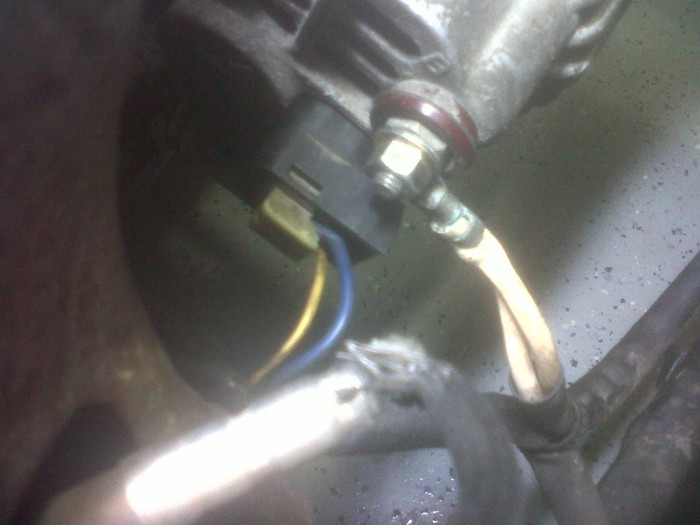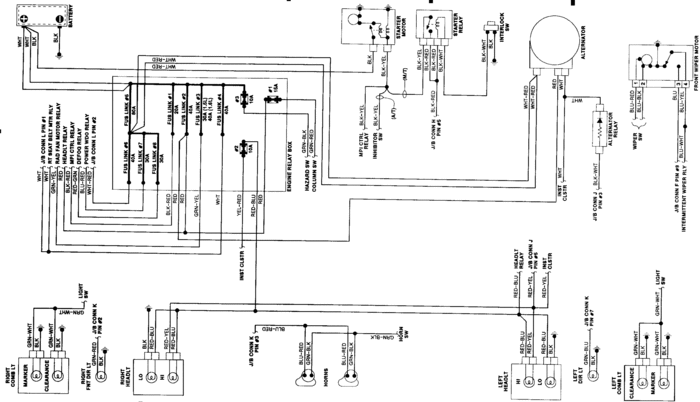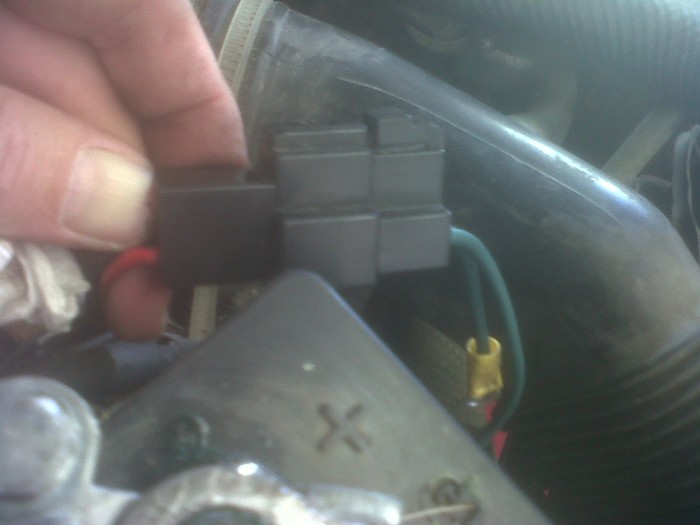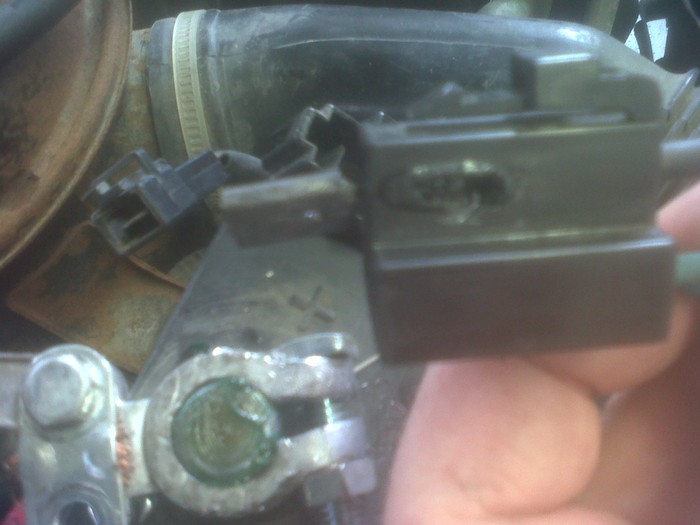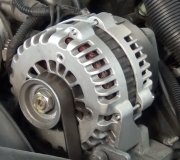It goes straight back to the battery. No electronics is in between. Only wires, fuses, and connectors which should all have 0 ohms of resistance. One common place to look is for a corroded wire under the insulation right at the connector terminal on the back of the alternator. Tug on it to see if it pulls out easily.
By the way, tug on all parts of the wire. A good fuse link will act like a wire. A burned open one will act like a rubber band. Fuse link wires will have a dull color unlike normal shiny regular wire. The insulation will feel rubbery too. Fuse links are usually six to ten inches long and there will be an inch or two of heat-shrink tubing on each end covering the splices. When you buy new ones you buy them according to color which denotes the current rating, just like with regular fuses. The common colors are orange, black, gray, white, and a putrid green. One piece can be cut to make a number of fuses; you don't have to put the whole thing they give you in there.
Another place to look is at the smaller wire on the positive battery cable. That's the one that typically went to the alternator's output terminal. On some cars, I think GMs in particular, they ran the output wire down to the larger terminal on the starter as a convenient tie point rather than running it all the way back to the battery. Fords used to run it to the battery terminal on the starter relay. On newer cars they run that wire to the fuse box, and to a fuse that's so big electrically that it has to be bolted in to insure a good connection. From the fuse box to the battery you typically wouldn't have to check because a problem there would cause additional things on the car to be dead.
Assuming nothing on that wire or inside the alternator is shorted to ground, you can verify everything else is working by running a temporary jumper wire from the battery positive cable to the alternator's output terminal. Do that with the engine off, and connect it to the battery first, then to the alternator. That's because if there is something shorted, (which I doubt), the spark will occur at the alternator, not at the battery where it could cause an explosion. Batteries give off explosive hydrogen gas. That's why with anything like this, and jumper cables, we always make the last connection, (the one where the spark will occur), away from the battery. The reason I doubt anything is shorted is because you were seeing voltage at the alternator's output terminal with the voltmeter. That wouldn't happen if that circuit was grounded, (shorted to ground).
Now the battery should charge and the battery plays a role in helping the voltage regulator do its thing. You should find between 13.75 and 14.75 volts at the battery with the engine running.
The next thing is to figure out why there is an open circuit. If you find a corroded connector or terminal, that is pretty self-explanatory. But if you find an open fuse link wire, unless you know what caused it, we have to wonder if there's something intermittently shorted that's going to occur again. Look for a wire harness draped over a sharp edge of a metal bracket, fell down onto hot engine or exhaust parts, or is rubbing against engine or body parts when the engine rocks during acceleration.
I never approve of running a new wire to solve a problem unless the cause of that problem has been identified and eliminated first or the entire piece of wire is a dull brown from corrosion. That means solder won't stick to make a repair. We don't want to just "get it working". We want to know what happened so it doesn't happen again or it doesn't happen to another wire for a different circuit in that same harness. I can't stress enough that with my students, "run a new wire" was never an acceptable answer, and they knew it, but if you're going to leave that temporary jumper wire in there for any length of time, be sure there is a fuse in it near the battery end. Because that fuse is going to have to pass the maximum current the alternator can produce, commonly 70 - 90 amps, the only fuse you might find would be another fuse link. If you try to use a smaller gauge piece of regular wire, and it burns open, it could melt the wire's insulation before it finally opens up, and that could lead to a fire. Also, since fuse link wire's insulation doesn't burn or melt, any spark when the wire opens is contained and won't ignite battery gases. Still, you won't find factory-installed fuse links real close to the battery. They'll be a good 15" away, just to be safe.
Friday, September 28th, 2012 AT 3:20 AM
